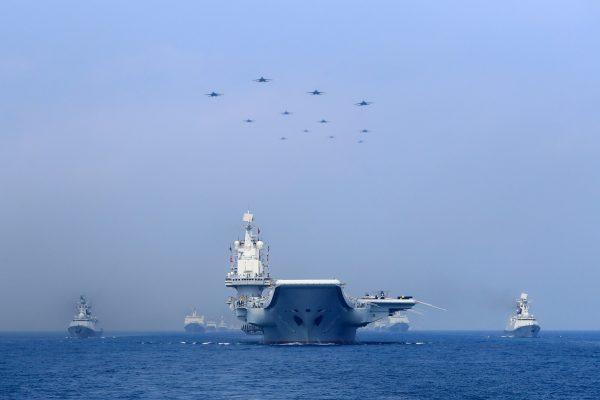China’s military has surpassed the United States in shipbuilding, air defense, and ground-based missile development, according to a Pentagon report, as the regime in Beijing strives toward its goal of becoming the world’s dominant superpower by the year 2049.
The 173-page report, which was provided to Congress, repeated the Pentagon’s previous assertion that Beijing will attempt to double its stockpile of nuclear warheads in the next decade, but, for the first time, includes an estimate on the current arsenal size: 200 warheads.
Beijing also is nearing completion of a nuclear triad, according to the report.
The Pentagon report casts doubt on Beijing’s stated “no-first-strike” nuclear posture, saying that developments last year suggest a shift toward a launch-on-warning (LOW) posture.
“An ability to double the stockpile not only demonstrates a move away from their historical minimum deterrence posture but places them in a position where they can readily grow their force beyond this number,” he said.
The report notes that the People’s Liberation Army’s objective is to become a “world-class” military by the end of 2049—a goal announced by CCP leader Xi Jinping in 2017.
“Although the CCP has not defined what a ‘world-class’ military means, within the context of the PRC’s [People’s Republic of China] national strategy it is likely that Beijing will seek to develop a military by mid-century that is equal to—or in some cases superior to—the U.S. military, or that of any other great power that the PRC views as a threat,” the report stated.

The PLA is already ahead of the United States in some areas, according to the report.
Beijing now commands the largest navy in the world, with roughly 350 ships and submarines. The U.S. Navy has 293 ships. China has the world’s largest arsenal of land-based missiles—built up while Russia and the United States were bound by arms treaties.
“The PRC has more than 1,250 ground-launched ballistic missiles (GLBMs) and ground-launched cruise missiles (GLCMs) with ranges between 500 and 5,500 kilometers. The United States currently fields one type of conventional GLBM with a range of 70 to 300 kilometers and no GLCMs.”

Those long-range missiles were developed to hold U.S. aircraft carriers at arm’s length. To keep the fighter jets from those carriers at bay, the CCP also developed an advanced integrated anti-aircraft system—another area in which it exceeds U.S. capabilities.
In many other areas, the PLA still lags behind the United States, according to the report.
“Despite the PLA’s progress over the past 20 years, major gaps and shortcomings remain,” the report notes. “The PRC’s leaders are aware of these problems, and their strategy envisions the PLA undergoing almost 30 more years of modernization and reform.
“More striking than the PLA’s staggering amounts of new military hardware are the recent sweeping efforts taken by [CCP] leaders that include completely restructuring the PLA into a force better suited for joint operations, improving the PLA’s overall combat readiness, encouraging the PLA to embrace new operational concepts, and expanding the [PRC’s] overseas military footprint.”
One of the ways the CCP pushes innovation in the military is through its Military–Civil Fusion (MCF) Development Strategy, which is described in detail in the report.
According to the report, “in practice, MCF means there is not a clear line between the PRC’s civilian and military economies, raising due diligence costs for U.S. and global entities that do not desire to contribute to the PRC’s military modernization.”
The military is also increasingly involved in broader elements of great power competition with the United States, such as its “three warfares” influence operations, run by the PLA.
“In 2019, the PRC recognized that its armed forces should take a more active role in advancing its foreign policy, highlighting the increasingly global character that Beijing ascribes to its military power,” according to the report.
Whether the CCP achieves its military goals depends on many factors, according to the report.
“What is certain is that the CCP has a strategic end state that it is working towards, which if achieved and its accompanying military modernization left unaddressed, will have serious implications for U.S. national interests and the security of the international rules-based order.”





